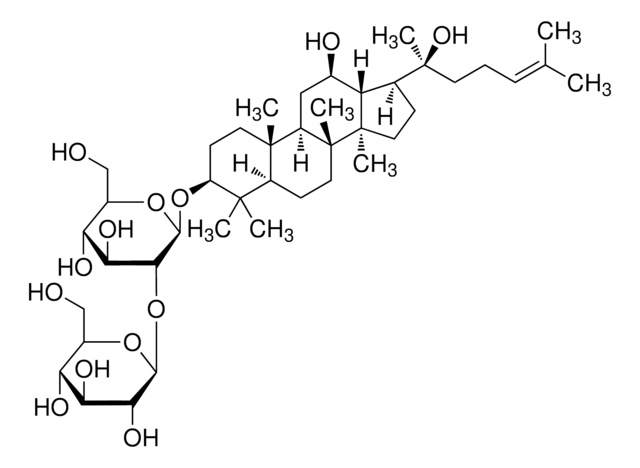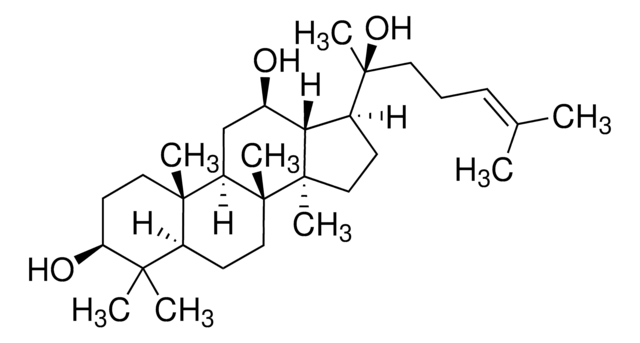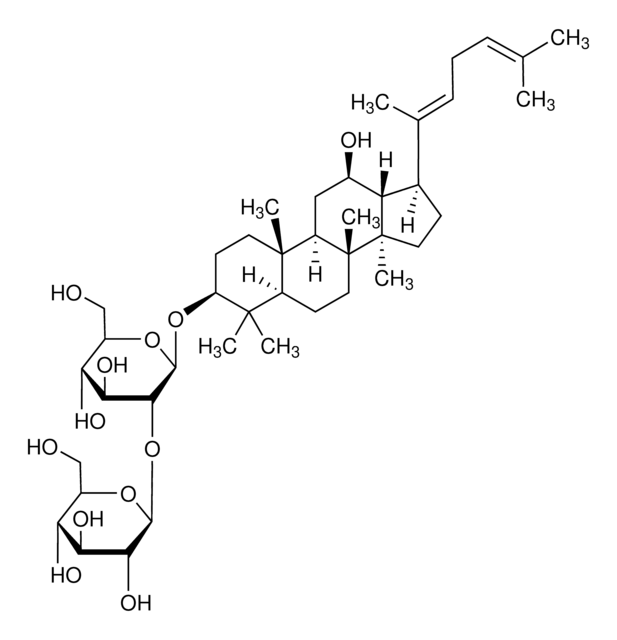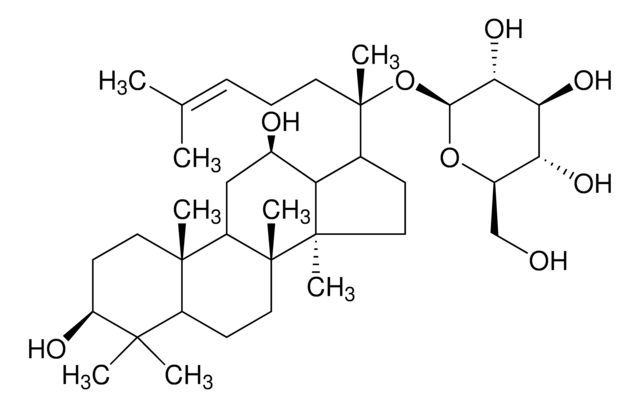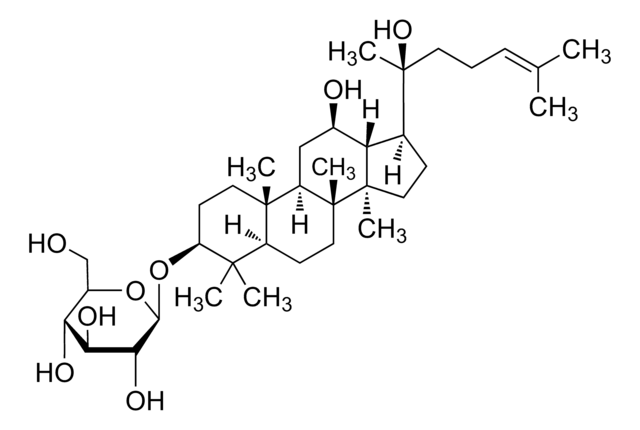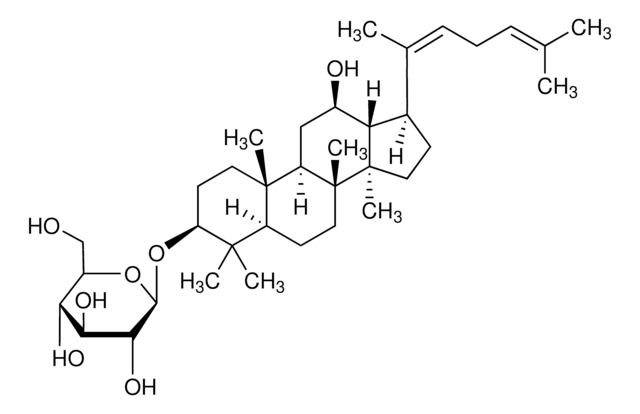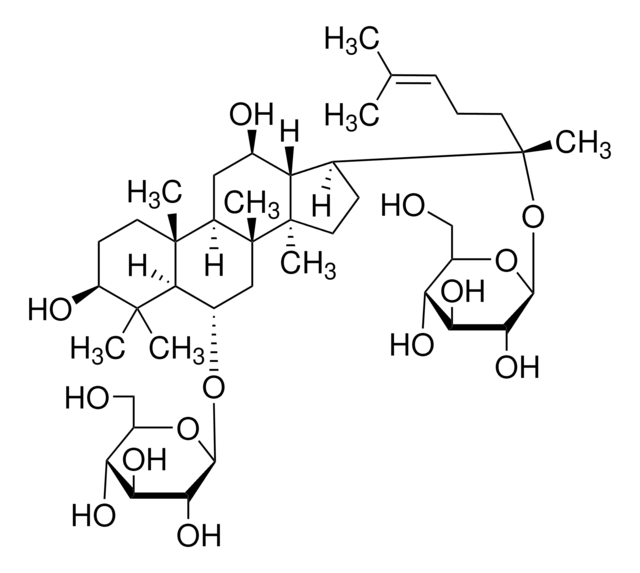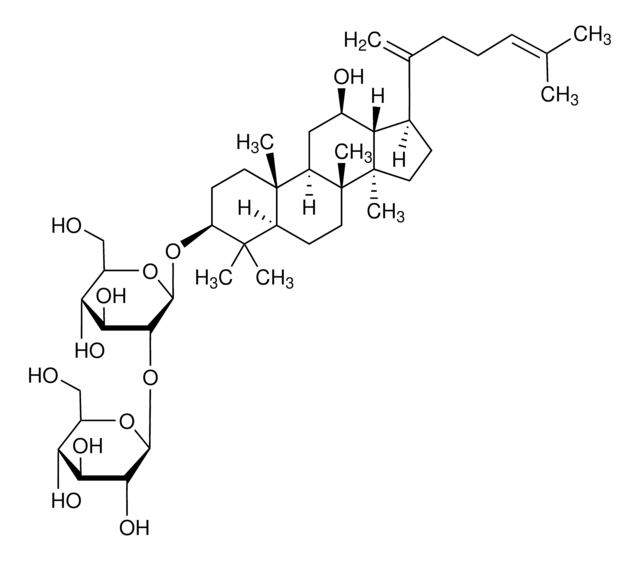About This Item
Recommended Products
form
powder
color
white
solubility
methanol: 5 mg/mL, clear, colorless
storage temp.
2-8°C
SMILES string
C[C@@]12CC[C@@]3([H])C(C)(C)[C@@H](O)CC[C@]3(C)[C@@]1([H])C[C@@H](O)[C@@]4([H])[C@]2(CC[C@]4([H])[C@@](CCC=C(C)C)(C)O)C
InChI
1S/C30H52O3/c1-19(2)10-9-14-30(8,33)20-11-16-29(7)25(20)21(31)18-23-27(5)15-13-24(32)26(3,4)22(27)12-17-28(23,29)6/h10,20-25,31-33H,9,11-18H2,1-8H3/t20-,21+,22-,23+,24-,25-,27-,28+,29+,30-/m0/s1
InChI key
PYXFVCFISTUSOO-HKUCOEKDSA-N
Looking for similar products? Visit Product Comparison Guide
General description
Application
Storage Class Code
13 - Non Combustible Solids
WGK
WGK 3
Regulatory Information
Choose from one of the most recent versions:
Already Own This Product?
Find documentation for the products that you have recently purchased in the Document Library.
Our team of scientists has experience in all areas of research including Life Science, Material Science, Chemical Synthesis, Chromatography, Analytical and many others.
Contact Technical Service